The European Union’s MiCA is set to introduce strict rules for stablecoins, especially those considered “significant e-money tokens” such as USDT. MiCA regulations mostly target centralized exchanges and stablecoin issuers, not cold wallets or individual users.
This article explores how MiCA affects stablecoins, the issuers that have complied, and what users need to expect.
TL;DR
- MiCA (Markets in Crypto-Assets Regulation) is the EU’s new crypto framework enforcing strict stablecoin regulations.
- Stablecoin issuers must maintain full reserves, undergo regular audits, and secure EU approval.
- USDC & EURC are MiCA-compliant, while USDT (Tether) is not.
- Major exchanges (Coinbase, Crypto.com, Kraken Binance) are delisting USDT in the EU.
- Users in the EU may need to switch to MiCA-approved stablecoins to avoid disruptions.
What is MiCA?
MiCA (Markets in Crypto-Assets Regulation) is a regulatory framework introduced by the European Union (EU) to establish clear rules for the cryptocurrency industry. Approved in 2023 and taking effect from March 2025, MiCA aims to:
- Enhance consumer protection by ensuring transparency and security for crypto investors.
- Regulate stablecoins, requiring issuers to maintain full reserves and operate under strict financial oversight.
- Prevent market abuse through anti-money laundering (AML) measures and investor safeguards.
- Provide legal clarity for crypto businesses operating in the EU.
MiCA is considered one of the most comprehensive crypto regulations globally, setting a precedent for other jurisdictions.
MiCA’s Stablecoin Regulations: Key Changes
MiCA categorizes stablecoins into two groups:
- E-Money Tokens (EMTs): Stablecoins pegged to a single official currency, functioning similarly to electronic money. Examples include USDC (USD Coin) and EURC (Euro Coin).
- Asset-Referenced Tokens (ARTs): Tokens pegged to multiple currencies, commodities, or other assets.
Key requirements for stablecoin issuers
To comply with MiCA, stablecoin issuers must adhere to several strict regulations:
- Authorization: To comply with financial standards, issuers must register as an Electronic Money Institution (EMI) or a Crypto-Asset Issuer (CI). An EMI license is necessary for issuing and trading Electronic Money Tokens (EMTs) publicly, while a CI license is required for public offers of EMTs or their acceptance in trading markets.
- Full Reserve Backing: Stablecoins must be backed by liquid reserves (such as cash or government bonds) equal to their circulation supply.
- White Paper Publishing: Issuers must publish a comprehensive document outlining how the stablecoin functions, the assets backing it, associated risks, and the operational framework.
- Maintaining Liquid Reserves with a Third-Party Custodian: To ensure financial stability, stablecoins must be backed 1:1 by real assets and securely held by a trusted external custodian.
- Regular Reserve Reporting: Issuers must provide periodic transparency reports detailing the value and composition of reserves, ensuring users and regulators have full visibility.
- Digital Token Identifiers (DTIs): Similar to digital fingerprints, DTIs must be included in a stablecoin’s white paper. They specify which blockchain the token operates on and help regulators track financial obligations.
What are Digital Token Identifiers (DTIs)?
A DTI is a unique reference code assigned to digital tokens under the ISO 24165 standard, established by the International Organization for Standardization (ISO).
Just as traditional financial instruments use International Securities Identification Numbers (ISINs) to classify stocks, bonds, and other assets, DTIs provide a standardized structure for cryptocurrencies. These alphanumeric codes ensure that each digital asset has a distinct and permanent identifier.
Managed by the Digital Token Identifier Foundation (DTIF), DTIs aim to improve market transparency, support regulatory oversight, and enhance interoperability across blockchain networks and financial institutions.
Significant stablecoins
Based on factors like market capitalization, transaction volume, and user base, significant stablecoins face even stricter rules, including enhanced regulatory supervision and higher capital requirements.
Although the regulation does not explicitly identify which stablecoins are significant, this portion of the legislation clearly focuses on stablecoins with substantial market capitalization, such as Tether and USD Coin.
Here are some key points regarding significant stablecoins as outlined by MiCA:
- The number of holders of the token exceeds 10 million.
- The market capitalization surpasses €5 billion.
- The average daily number of transactions exceeds 2.5 million.
- The average daily transaction volume exceeds €500 million.
Currently, only three stablecoins meet at least three of these criteria: Tether, USD Coin, and Multi-Collateral DAI.
Which stablecoins are MiCA-compliant?
Some stablecoins have successfully met MiCA’s compliance requirements, securing approval for continued operation in the EU:
- Circle’s USDC & EURC: First global stablecoins to achieve full MiCA compliance.
Approved issuers include Banking Circle, Crypto.com, Fiat Republic, Membrane Finance, Quantoz Payments, Schuman Financial, Société Générale, StabIR, and Stable Mint.
- EURI: Banking Circle issues this stablecoin, which is classified as a CI in Luxembourg (DTI: LGPZM7PJ9) and operates on Ethereum and BNB Smart Chain.
- EURe: Developed by Monerium, this stablecoin is registered as an EMI under the Central Bank of Iceland and is available on Ethereum, Polygon, and Gnosis.
- EURCV: CoinVertible, issued by SG Forge, is registered as an EMI in France with DTI 9W5C49FJV and functions on Ethereum.
- EURD: Issued by Quantoz Payments, this stablecoin is recognized as an EMI in the Netherlands (DTI: 3R9LGFRFP) and runs on Algorand.
- EUROe & eUSD: Membrane Finance Oy’s stablecoins are classified as EMIs in Finland and are available on multiple networks, including Concordium, Solana, Arbitrum, Avalanche, Ethereum, Optimism, and Polygon.
- EURQ & USDQ: Quantoz Payments launched these stablecoins with backing from Tether, Kraken, and Fabric Ventures. They are fully fiat-backed and licensed as e-money tokens by the Dutch Central Bank (DNB).
- EURØP: Issued by Schuman Financial, this euro-pegged stablecoin is fully backed by cash and cash equivalents and will be available on Ethereum and Polygon.
Tether (USDT) has not been included among MiCA-approved stablecoins, raising concerns about its availability in the EU market.
What happens to Tether’s USDT?
Tether—the issuer of USDT—faces significant challenges under MiCA. Major crypto exchanges are already taking action:
- Coinbase delisted USDT for EU customers in December 2024.
- Crypto.com will delist USDT and nine other tokens by March 31, 2025.
- Binance is expected to follow suit, removing USDT from its EU offerings.
Tether has criticized these moves, calling them “rushed actions” that may disrupt the market. However, the company is reportedly engaging with a Big Four accounting firm to conduct a full reserve audit in hopes of achieving regulatory approval.
How MiCA’s rules affect crypto users
MiCA’s implementation has direct implications for stablecoin users:
- Greater Consumer Protection: Users benefit from fully backed stablecoins with increased transparency and regulatory oversight.
- Potential Market Shifts: Non-compliant stablecoins like USDT may be delisted, requiring users to migrate to MiCA-approved alternatives like USDC.
- Reduced Liquidity for Some Stablecoins: Limited availability of USDT in the EU could impact trading pairs and DeFi liquidity.
- Market Consolidation: MiCA’s strict requirements may drive smaller stablecoins out of the market, leaving only well-capitalized issuers.
Final thoughts
MiCA represents a significant shift for the crypto industry, aiming to create a safer, more transparent environment for stablecoins. While Circle’s USDC and other MiCA-approved stablecoins are positioned for continued growth in the EU, Tether’s USDT faces regulatory uncertainty and exchange delistings.
For EU crypto users, staying informed about their stablecoin holdings and transitioning to compliant assets may be necessary in the months ahead.








